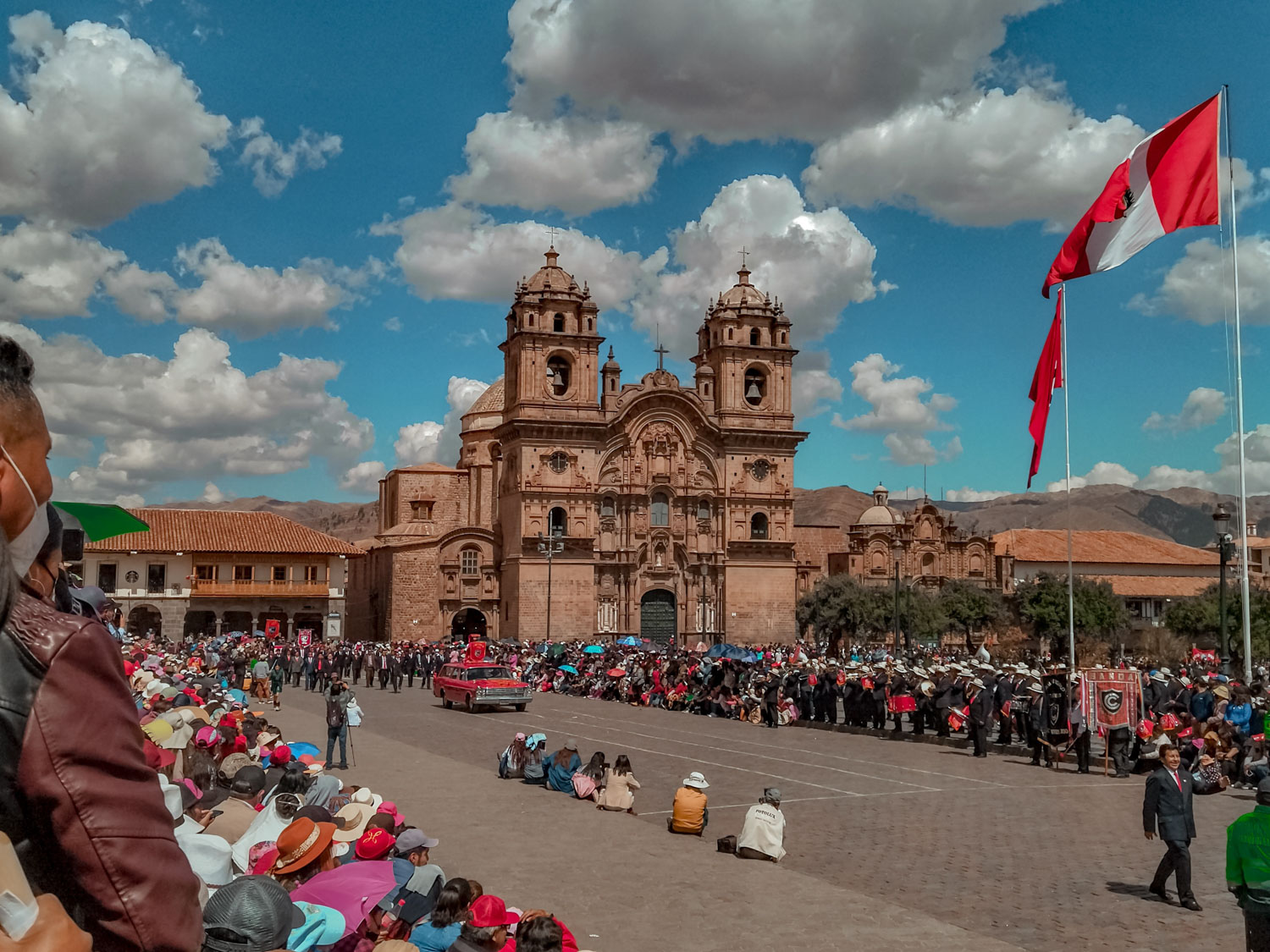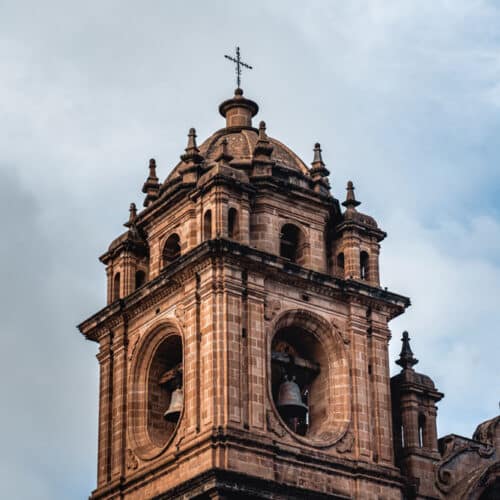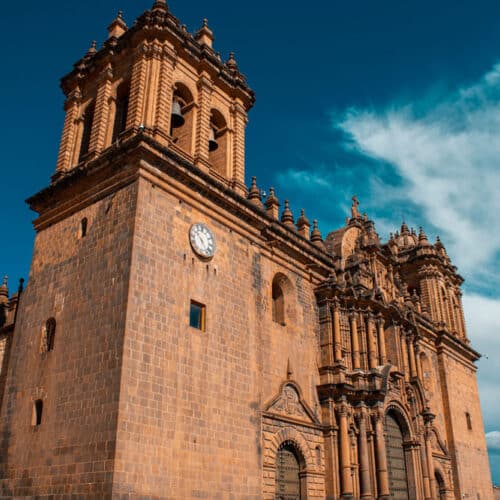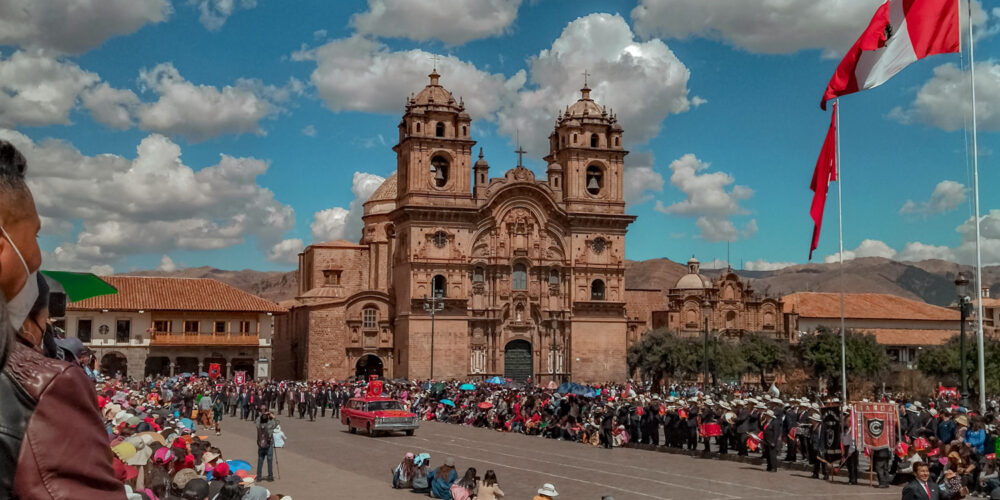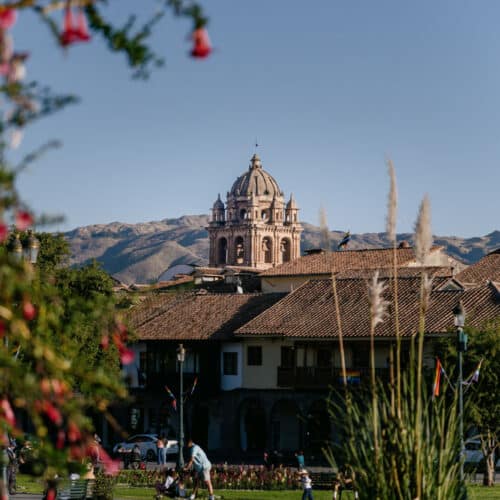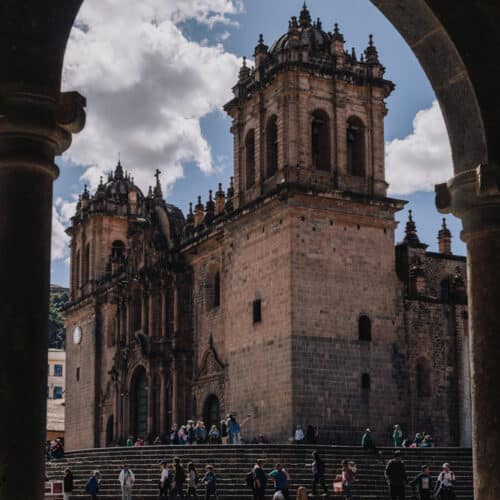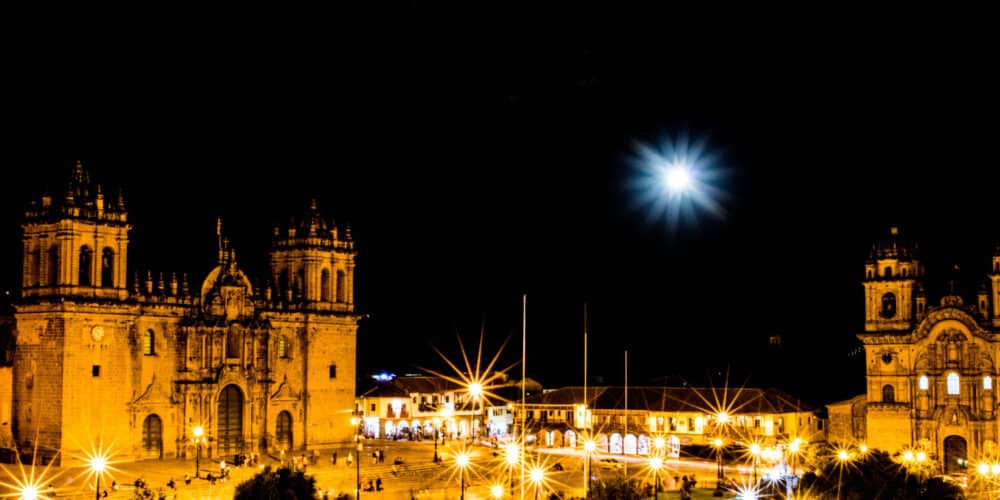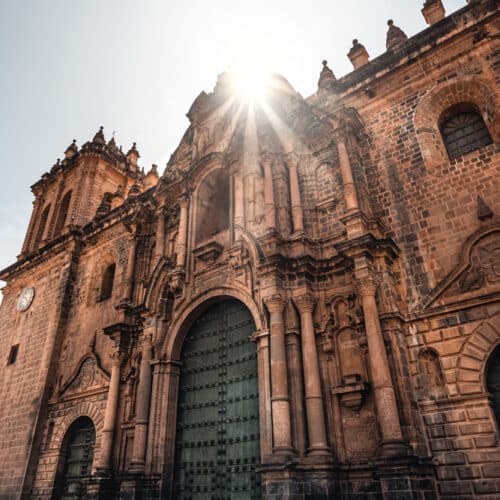Exploring the Magnificent Cusco Cathedral: A Glimpse into Cusco’s Rich History
Cusco Cathedral Important Details:
- Address: Plaza de Armas, Cusco, Peru (Google Maps)
- Hours of Operation: Monday to Sunday, 10:00 AM – 6:00 PM
- Cost of Entrance: Variable, usually around $10 – $15 (The cathedral typically has a ticket booth where you can buy your entry pass on the spot)
- Recommended Time to Spend: 1 – 2 hours
- How to Arrive: The cathedral is centrally located in Cusco, easily accessible by walking or a short taxi ride.
- Distance From Plaza de Armas in Cusco: Located right in Plaza de Armas (Google Maps)
- Distance from the Airport in Cusco: Approximately 5 miles (8 km) from Alejandro Velasco Astete International Airport. (Google Maps Route)
- Ideal Month(s) to Visit: May to September, during the dry season.
- Ideal Time of Day to Visit: Early morning to avoid crowds, or late afternoon for the beautiful golden hour light.
Nestled in the heart of Cusco’s historic Plaza de Armas, the Cusco Cathedral stands as a remarkable testament to the city’s rich history and architectural grandeur. As you step inside this magnificent cathedral, you’re transported to an era where Spanish colonial influence meets indigenous craftsmanship.
How to Get to The Cusco Cathedral:
The Cusco Cathedral’s prime location makes it easily accessible by foot from most parts of the city center. If you’re arriving by air, a short taxi ride from Alejandro Velasco Astete International Airport will take you straight to Plaza de Armas, where the cathedral is situated.
The History of The Cusco Cathedral:
The history of the Cusco Cathedral is a captivating narrative that weaves together the intricate threads of Spanish colonial expansion, indigenous craftsmanship, and religious transformation. It also stands as a testament to the evolving cultural landscape of Cusco, a city once at the heart of the Inca Empire, and the impact of European influence that followed.
Construction of the cathedral began in 1559 on the site of the ancient Inca palace of Viracocha. This deliberate choice of location by the Spanish conquistadors symbolized their intent to assert dominance over the indigenous beliefs and traditions that were deeply ingrained in the region. The cathedral’s foundations were laid upon stones quarried from Sacsayhuamán, a nearby Inca fortress and religious site, merging indigenous stonework with Spanish architectural techniques.
Over the course of nearly a century, the cathedral’s construction saw various architects and artisans contributing to its design. The result is a harmonious blend of Gothic, Renaissance, and Baroque architectural elements, a true reflection of the evolving architectural trends of the time. The use of intricate carvings, decorative motifs, and elaborate facades showcases the skilled craftsmanship that went into creating this remarkable edifice.
The interior of the Cusco Cathedral is equally captivating, with its aisles lined with ornate chapels, altars adorned with gold leaf, and a resplendent main altar that stands as a pinnacle of Baroque artistry. The cathedral’s collection of colonial-era paintings, sculptures, and religious artifacts provides a visual narrative of the complex interplay between Spanish colonial rule and indigenous spirituality.
It’s important to note that the Cusco Cathedral is not merely an architectural marvel; it is a living embodiment of historical moments. It was here that the conquistadors, led by Francisco Pizarro, established their dominance by planting a Christian cross on the site of an Inca religious ceremony. This pivotal event marked the beginning of the cathedral’s construction and signaled the profound changes that would shape Cusco’s cultural landscape.
Today, the Cusco Cathedral stands as a UNESCO World Heritage site, a testament to the enduring legacy of its rich history. It’s not just a place of worship or an art gallery; it’s a time capsule that encapsulates the complexities of Cusco’s past. As visitors step through its grand doors, they step into a world where history is etched in stone, where cultures collide, and where the echoes of the past continue to resonate in the present.
What to Do at The Cusco Cathedral:
- Admire the Architecture: The cathedral’s facade is a masterpiece of Spanish Renaissance style. The intricately carved wooden choir stalls and the main altar, covered in gold leaf, are simply awe-inspiring. The building is great for photos and it’s one of the most iconic buildings of Cusco.
- View Colonial Art: The cathedral houses an extensive collection of colonial art, including paintings, sculptures, and religious artifacts, offering insight into the fusion of cultures during the colonial era.
- Visit the Religious Art Museum: Located within the cathedral complex, the museum showcases a diverse range of religious art and artifacts that provide a deeper understanding of Cusco’s spiritual history.
Cusco Cathedral Frequently Asked Questions (FAQs):
Is The Cusco Cathedral Safe?
Yes, the cathedral is a safe and popular tourist attraction. Just be cautious with your belongings, as with any busy tourist area.
Can You Walk There from Other Tourist Attractions in Cusco?
Absolutely! Many of Cusco’s main attractions, including the San Blas neighborhood and Coricancha, are within walking distance from the cathedral.
Why Is The Cusco Cathedral Considered Noteworthy?
The cathedral’s blend of Spanish colonial and indigenous architecture, coupled with its rich historical significance and stunning artwork, makes it an essential stop for those exploring Cusco’s cultural heritage.
Are There Tours for The Cusco Cathedral?
Yes, there are guided tours available that provide deeper insights into the cathedral’s history and the art it houses.
In conclusion, a visit to the Cusco Cathedral is more than just an exploration of breathtaking architecture and art; it’s a journey through time, culture, and spirituality.


